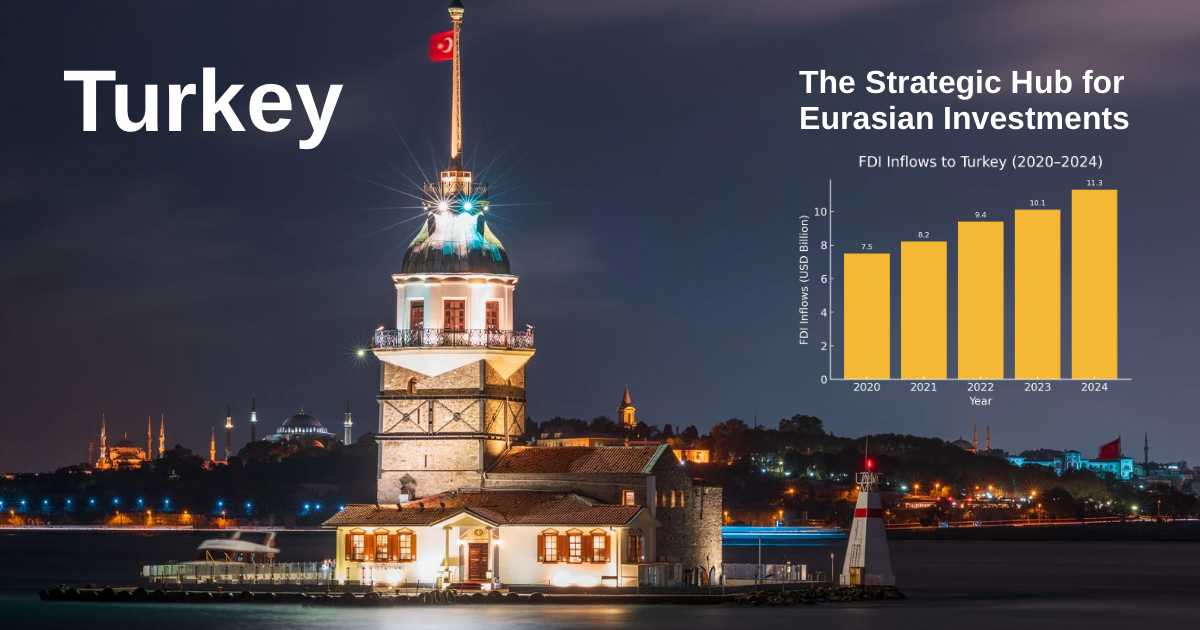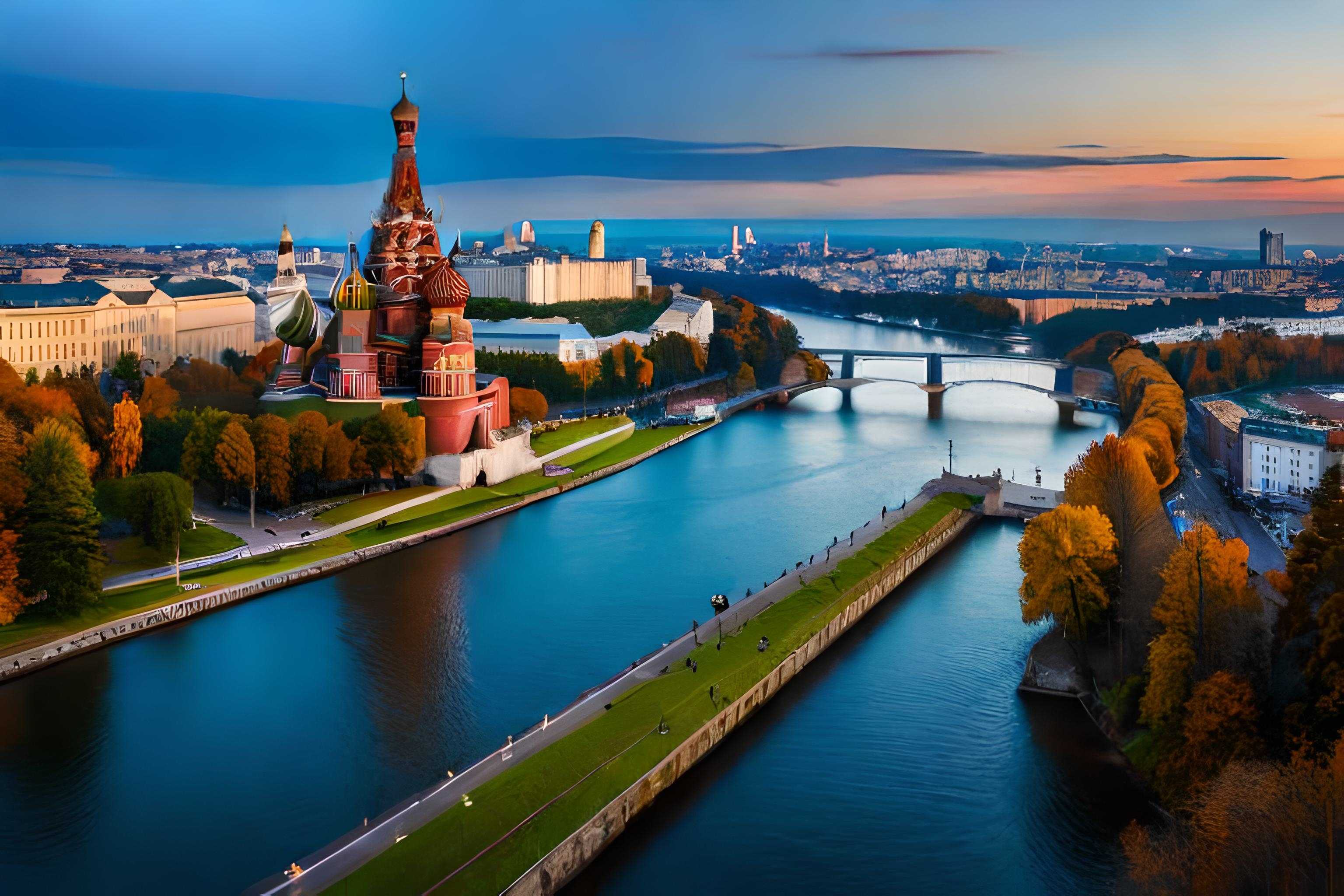Turkey’s Investment Landscape: A Geopolitical, Financial, and Strategic Analysis for Chinese and Arab Investors (2025)

As of 2025, Turkey continues to offer a unique mix of opportunities and risks for Chinese and Arab investors, driven by its strategic geopolitical location, young demographic profile, and emerging market dynamics. However, informed investment decisions require a comprehensive analysis of Turkey’s current political structure, financial markets, and societal dynamics.
Turkey’s increasing significance within the Eurasian region directly aligns with the strategic objectives of both China’s Belt and Road Initiative (BRI) and the Arab world’s economic diversification programs such as Vision 2030. According to data from the China Global Investment Tracker (2024), Turkey ranked among the top ten countries for BRI-related investments in 2024, with total FDI exceeding USD 3.2 billion. Similarly, Arab countries, particularly members of the Gulf Cooperation Council (GCC), invested approximately USD 5.7 billion in Turkey’s real estate, healthcare, agriculture, and tourism sectors in 2024 (JLL MENA Real Estate Outlook, 2024).
Geopolitically, Turkey’s location presents both strategic advantages and inherent uncertainties. On one hand, its NATO membership and Customs Union relationship with the European Union provide privileged access to Western markets. On the other hand, its expanding relationships with China, Russia, and Central Asia position Turkey as a critical hub within emerging multipolar networks (Brookings Institution, 2024). Nevertheless, security threats stemming from Syria and Iraq, tensions over Eastern Mediterranean energy resources, and domestic political polarization represent key geopolitical risks (Economist Intelligence Unit, Turkey Risk Report, 2025).
In financial terms, Turkey has pursued tight monetary policies in 2024–2025 to combat high inflation. As of April 2025, the Central Bank of the Republic of Turkey (CBRT) maintains a policy rate of 50%. Annual inflation stands at 67% (Turkish Statistical Institute, March 2025). Moody’s 2025 Turkey Report forecasts that inflation could decline below 25% by 2026, offering a potential stabilization trajectory.
Despite high inflation and interest rates, the depreciation of the Turkish Lira has turned Turkey into a “buyer’s market” for foreign investors. Real assets such as real estate, tourism facilities, and industrial zones offer significant discounts in USD and EUR terms. According to Eurostat (2024), labor costs in Turkey are 31% lower than the European average, providing a competitive advantage for industrial and manufacturing investments.
For Chinese investors, Turkey serves as a strategic center for logistics, e-commerce infrastructure, industrial zones, and energy projects. Major companies such as Huawei and Alibaba have expanded their operations in Turkey (South China Morning Post, 2024), underlining the country’s appeal as a gateway to the Middle East, Africa, and Europe. Meanwhile, Arab investors are increasingly targeting real estate, healthcare tourism, and agricultural sectors, with property acquisitions in cities like Istanbul, Antalya, Alanya, and Bodrum rising by 22% in 2024 (Knight Frank Middle East Report, 2024).
Regarding societal perception, Turkey generally maintains a positive attitude toward foreign investment, although sectoral sensitivities persist. According to Oxford Analytica (2024), Chinese investors are associated with technological prowess, while Arab investors are perceived more favorably due to cultural and religious affinities. Nevertheless, intensive real estate acquisitions have occasionally triggered concerns about the transfer of national assets, emphasizing the importance of socially responsible projects that contribute to local employment and community engagement.
Strategic opportunities for 2025 and beyond include digital transformation, green energy investments, healthcare tourism, and advanced manufacturing. Turkey’s alignment with the European Green Deal framework (European Commission, 2024) is expected to generate new incentives for energy efficiency and sustainable investments. Furthermore, Turkey’s role as an investment hub for reaching African and Middle Eastern markets enhances its strategic appeal for export-oriented projects.
Conversely, key risks that investors must navigate include persistent inflationary pressures, currency volatility, domestic political tensions, and regional security threats. Long-term investment strategies, careful sector selection, strong local partnerships, and proactive financial risk management are essential to mitigate these risks.
In conclusion, Turkey’s current geopolitical and financial landscape presents both high-risk and high-reward dynamics for Chinese and Arab investors. Investors who carefully analyze macroeconomic indicators, political trends, and social dynamics — and who commit to sustainable, culturally sensitive, and strategic investments — are well-positioned to capitalize on Turkey’s long-term growth potential.
References
- Brookings Institution. (2024). Turkey’s Emerging Role in Eurasia: Strategic Balancing between East and West.
- China Global Investment Tracker. (2024). Belt and Road Investment Flows Report.
- JLL MENA Real Estate Outlook. (2024). Middle East and North Africa Investment Trends.
- Economist Intelligence Unit (EIU). (2025). Turkey Country Risk Report.
- Turkish Statistical Institute (TÜİK). (March 2025). Inflation and Macroeconomic Indicators.
- Central Bank of the Republic of Turkey (CBRT). (April 2025). Monetary Policy Overview.
- Moody’s Investors Service. (2025). Turkey Economic Outlook and Credit Rating.
- South China Morning Post. (2024). Chinese Tech Giants Expand Investments in Turkey.
- Knight Frank Middle East. (2024). Gulf Real Estate Investment in Turkey.
- Eurostat. (2024). Labor Costs in Europe: Comparative Analysis.
- Oxford Analytica. (2024). Foreign Investment Perception Study in Turkey.
- European Commission. (2024). European Green Deal Progress Report – Turkey Country Note.




